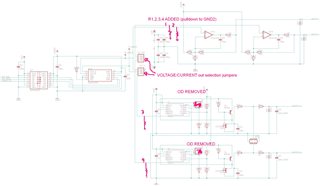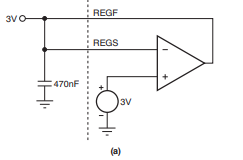Other Parts Discussed in Thread: OPA188
Hello,
I'm using XTR111 for a PCB I've built. My board can have voltage or current output. For voltage output the output of my DAC is connected to an op-amp circuit, for current output the DAC is connected to the input pin of my XTR111 circuit. This is done use jumpers.
Actually I also have jumpers for the OD (output disable) pin of the XTR111, those are connected when the board is in voltage mode output.
I would like to remove the OD jumpers. So leave the XTR111 always on.
My question is: if I don't want to use the current output, what if the input pin of XTR111 (namely VIN) is left floating, so unconnected? Do you find any issue on that?
Thanks!




